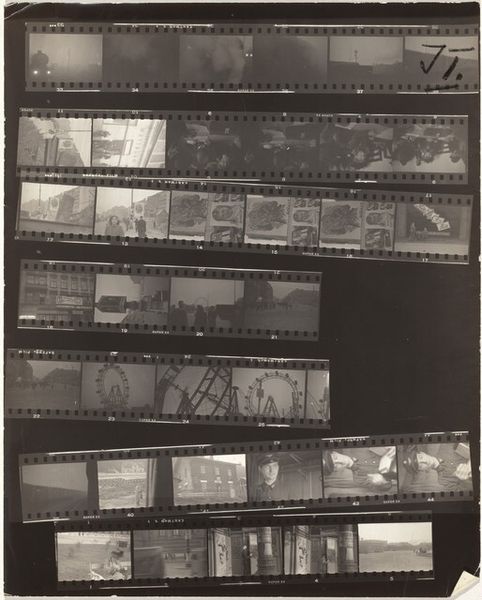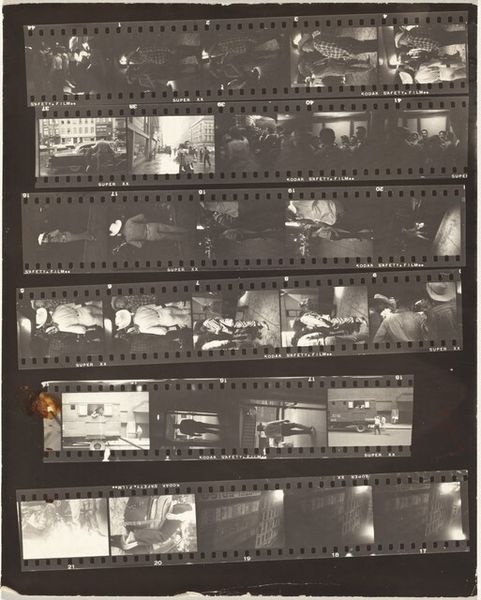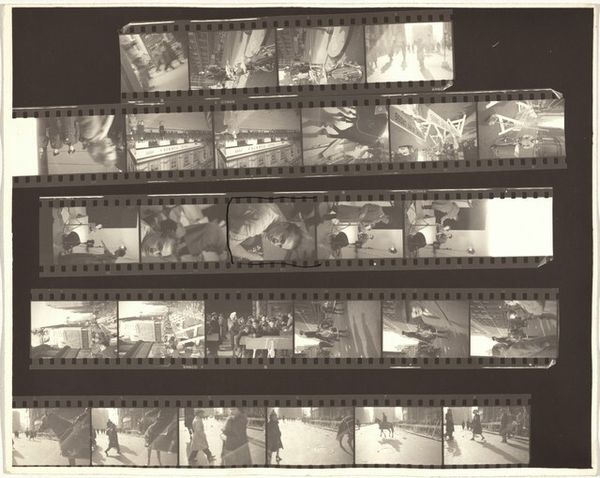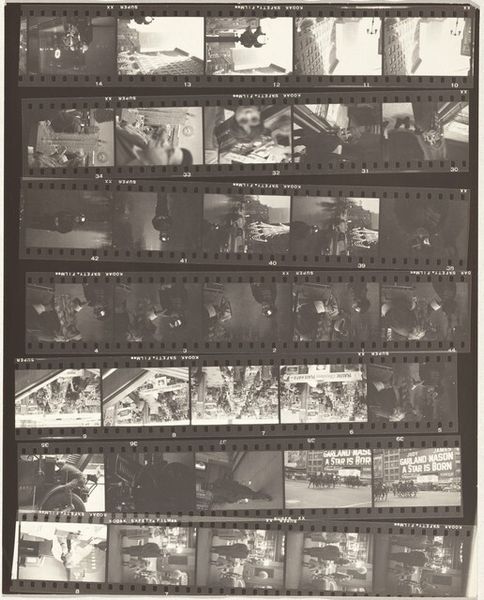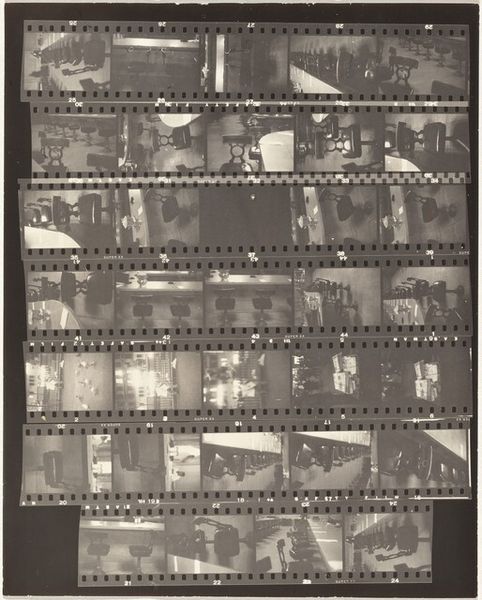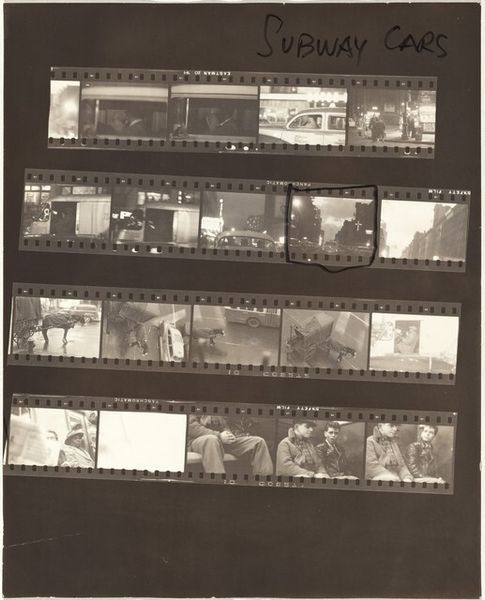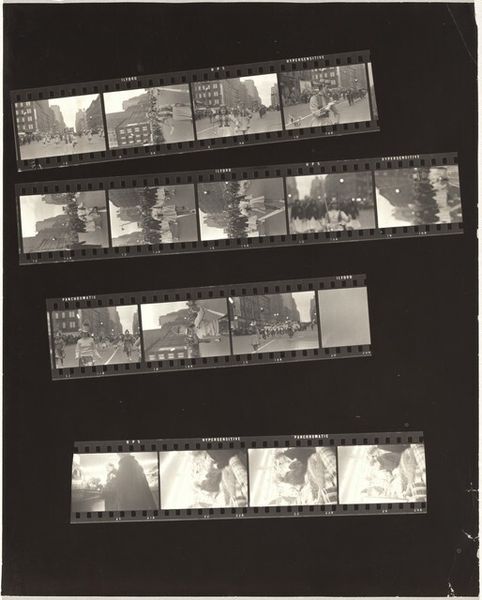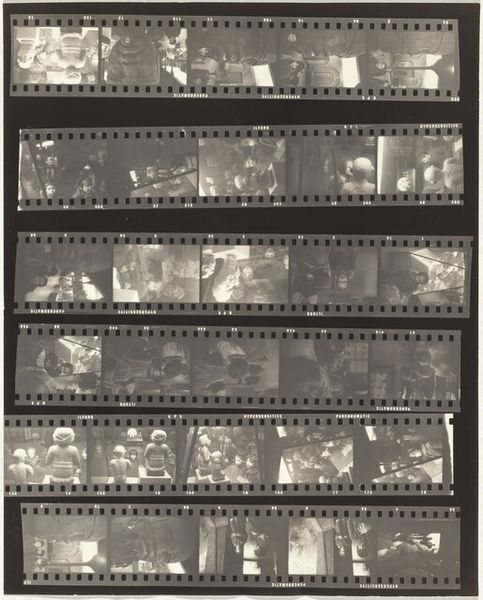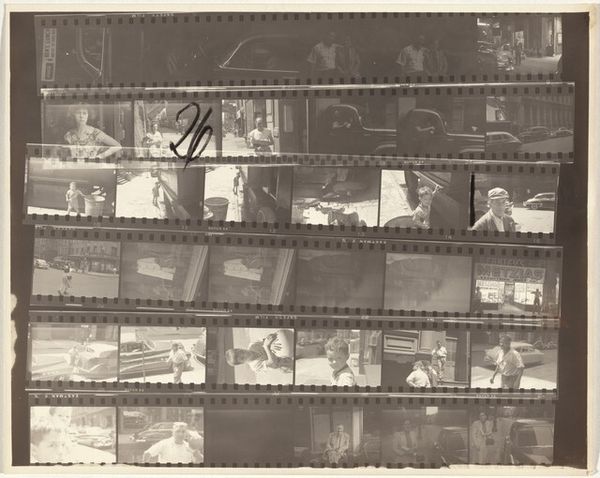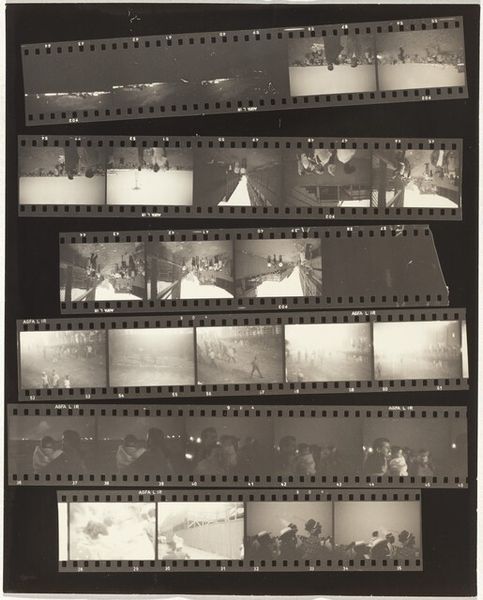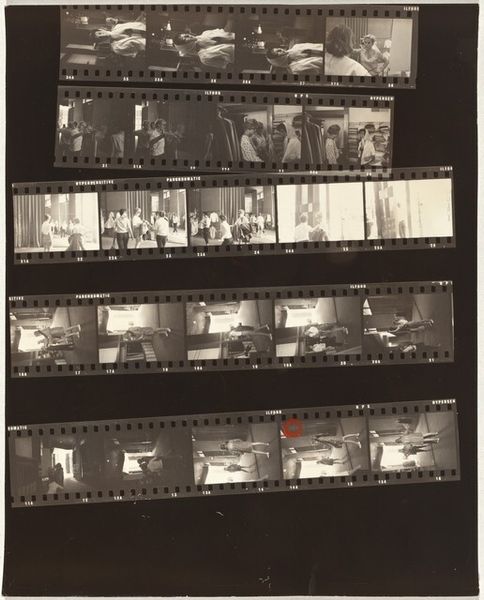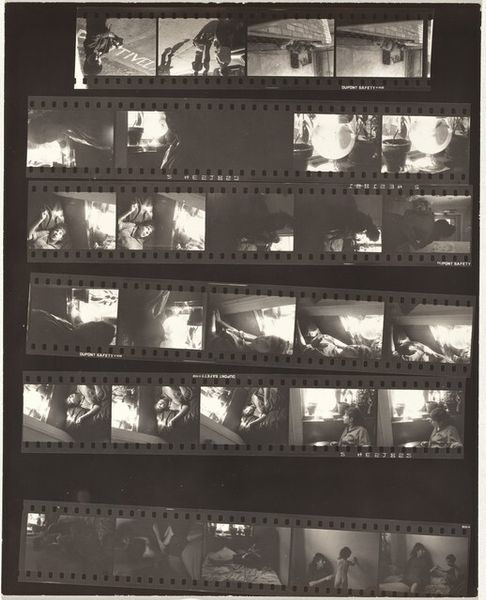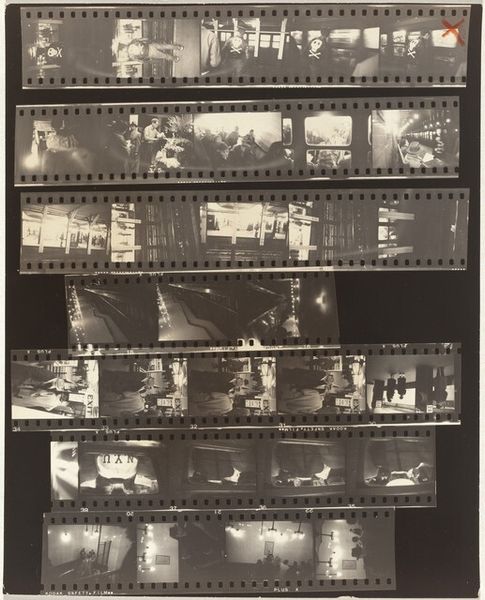
Dimensions: sheet: 25.3 x 20.4 cm (9 15/16 x 8 1/16 in.)
Copyright: National Gallery of Art: CC0 1.0
Editor: Here we have Robert Frank's gelatin silver print from 1954, titled "From car--New York City no number". It's quite striking; the sequencing of images on the film strip evokes a fleeting sense of memory and journey. How might you approach interpreting this? Curator: Focusing on its materiality, we should recognize this is not a 'precious' object in the traditional art sense. The accessibility of the materials – film, a relatively inexpensive camera – immediately positions it in a different economic sphere than, say, an oil painting from the same period. Consider how Frank democratizes the act of image-making and consumption, capturing scenes often overlooked and elevating them. Editor: I see what you mean. So, beyond just the 'snapshot' aesthetic, you're drawing attention to the means by which this image came into being? Curator: Exactly! And who gets to participate in this visual language. Look closely at the choices: why a car, a quintessential symbol of American production and freedom? This photograph exposes that ideal, framing the world through the lens of consumerism and the road. Think about the darks and lights, too. How does the high contrast relate to social divides during this period? Editor: It really brings out the starkness, almost a sense of alienation within a bustling environment. What was Frank commenting on? Curator: Possibly critiquing. This challenges idealized imagery by pointing toward social and industrial structures that shape our perceptions. It highlights, through accessible means of production, what gets consumed and whose stories are ignored within the mainstream media of the time. Do you notice a conscious intention to disrupt dominant visual narratives, capturing 'real' American experiences as observed through his particular journey? Editor: Absolutely. I’m starting to see this photograph not just as an image, but as a statement on materials, production, and society in 1950s America. Thanks for the fresh perspective! Curator: It's about thinking of art as labor, its raw materials, and social messaging through its production and audience experience. That approach offers a broader entry point for analysis.
Comments
No comments
Be the first to comment and join the conversation on the ultimate creative platform.
